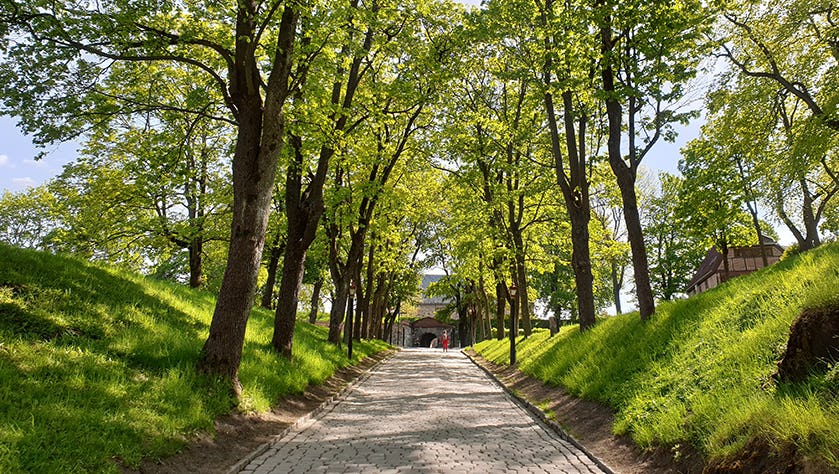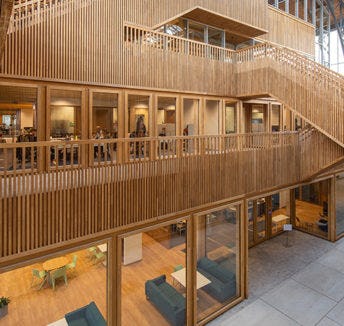
Built using reclaimed and recycled materials, this ‘new’ flexible workspace building in Norway is an environmental game changer
When is a new building not a new building? The answer is: when it’s recycled. The latest Spaces centre to open in Norway, Oslo’s Spaces Tullinløkka, was created in a groundbreaking, entirely emission-free construction project – using wholly recycled, rescued and upcycled materials.
The team behind it – Spaces, along with owners Entra ASA and architect Scenario Interior Architecture Design – started with a disused 1950s office building in the centre of Oslo and the goal of making the renovation project as green as possible. For Scenario architect Kristine Aasved Storeide, it was a chance to experiment.
“A lot of the things we did on this project, we made up as we went along,” she says. The team found steel beams, window panes, bricks, wooden benches and bathroom sinks from demolished buildings across the city, or left over by manufacturers and destined for landfill.
They then let the materials dictate the innovative design, from repurposing swimming pool benches as steps on a staircase, to embedding shattered window glass into cement floors. This careful reuse of reclaimed materials means the site produced zero carbon emissions.
“I love what we did with the tiling in the building,” says Storeide. “We got loads of irregular or leftover tiles that were going to be thrown out or smashed up, and we used them to create mixed detailing in the toilets, as well as making a very beautiful feature table. It’s recycled, but it also looks good for the clients.”
Sustainable buildings are not simply a trend, but a necessity, as property companies begin to rethink the environmental strain of construction and consider other options. And it’s something that both companies and their employees have an eye on: in 2019, 70% of US workers surveyed said they were more inclined to accept employment at firms with a robust sustainability agenda, while nearly 40% of millennials (who account for more than half of today’s workforce) had already chosen to work with employers that had a demonstrable record of environmental compliance. In itself, the hybrid working model can help bolster businesses’ sustainability goals, reducing waste, cutting down commuting and offering benefits for the plant, people and in terms of profit.
One emerging aspect of sustainability that Storeide is concentrating on is buildings that have an innate flexibility to adapt for different purposes. “We’re trying to think as flexible as possible, because the ventilation, plumbing, electricity and technical parts of the building are really expensive to renovate,” she explains. “So making that more sustainable and greener will have a huge impact.” With that in mind, Spaces Tullinløkka has been designed with moveable walls and highly adaptable layouts, so entire floors can be changed for new users.
The centre is open now, with eight floors of light-filled, contemporary private offices, meeting rooms and communal areas, as well as super-fast WiFi and great local transport connections.
Enjoy this? You might also like these Spaces magazine stories:
Share this article
 Read now The 15-Minute City: meet the micro-commute of the future
Read now The 15-Minute City: meet the micro-commute of the future
 Read now Green Spaces: four cool and eco-friendly flexspaces
Read now Green Spaces: four cool and eco-friendly flexspaces